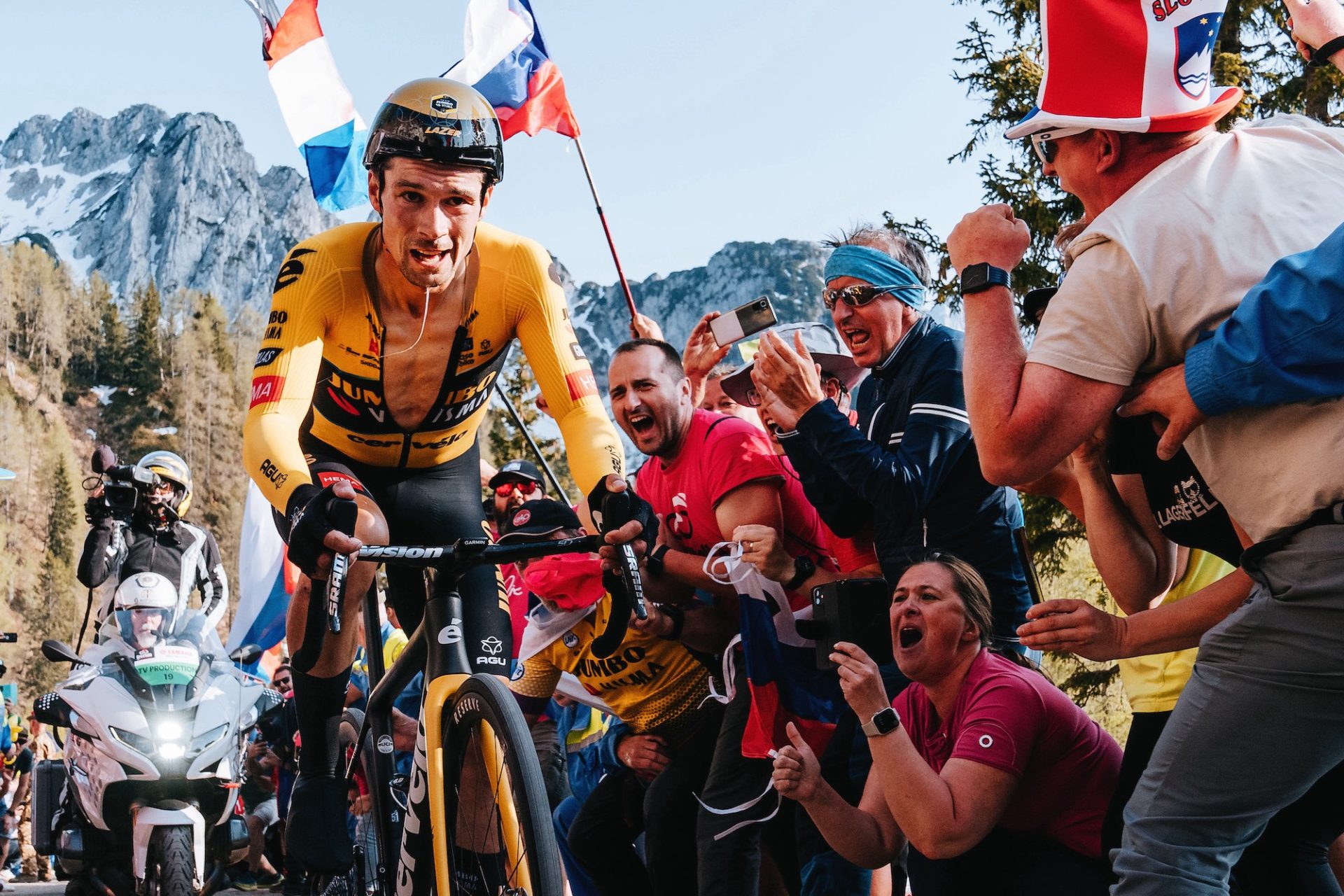Two weeks into the 2023 Giro d'Italia, the race started to shape up as a heavyweight clash between two former Grand Tour winners: three-time Vuelta a España champ Primož Roglič and 2018 Tour de France champ Geraint Thomas.
More than just a compelling duel between stars, it was also a showdown between an Ineos Grenadiers team and a Jumbo-Visma squad both attempting to win using similar tactics, a matchup that, in a way, has been a long time coming.
Cast your mind back to 2020, when Jumbo-Visma emerged as a team intent on challenging Ineos in the Grand Tours, with Roglič leading the way for a squad built to operate in much the same way that Sky had done so successfully for so long. For a decade, the British outfit had stamped its authority on Grand Tours with an unmistakably identifiable approach: The Sky Train, that unstoppable locomotive that helped propel so many riders to so many huge wins, putting its star domestiques to work on climb after climb, setting a tempo that stifled all other attacks, often leaving fans clamoring for someone, anyone, to break the team's firm grip on the racing and actually make things exciting again.
It worked best for Sky when the team could rely on the likes of Bradley Wiggins, Chris Froome, or Thomas himself to endure the grueling tempo set by his teammates on the steep stuff and reliably deliver a star turn against the clock. Back in 2020, as Ineos started to shift its focus to Egan Bernal, Jumbo-Visma seemed set to put that model to work with an all-rounder of their own in Roglič, a rider who, like Thomas, has made a career of grinding away at his opponents and then leaving them behind in the final few hundred meters of climbs as well as thriving in the TTs.
In the end, another Slovenian emerged at the 2020 Tour, and since then, we've never really had a chance to see The Train taking on a similarly minded Jumbo-Visma, until this month in Italy, where two elite climbers with top TTs battled with the support of exceptional teammates. For Ineos at this Giro, it was Thomas supported mainly by Thymen Arensman and Laurens de Plus (after Tao Geoghegan Hart left the race of course) and Roglič supported most notably by Sepp Kuss.
Given the team composition and the conversations that we in the cycling media were already having three years ago about how these squads measured up against each other, perhaps it was no surprise that they spent the vast majority of the race content with the strategy of riding tempo at the front. Thomas had garnered a small advantage in the early TTs, and from there, he and his team seemed set on keeping the pace high to discourage attacks, and Roglič and Co. did little to change the state of affairs, either watching the Ineos train do its thing or putting Kuss to work in a similar way during the later mountain stages.
It may not be a popular approach, but can you really blame the riders for relying on such a successful tactic? For years, it worked at the biggest race in the world, and at the end of the day, these guys are here to win bike races.
This time, however, we finally got to see Ineos put that tried and true tactic to the test against a rival built to thrive under those circumstances, a rival who seemed almost as content as Thomas to simply wait for that final TT to make all the difference. In the end, although Roglič did try to get clear very late on the mountain stages, his approach was still predicated on grinding through the steep stuff rather than putting in a huge attack from afar.
It all came down to the TT – and on that all-important stage, Roglič proved strongest.

When all was said and done, it turns out that the resurrected tactics of the last decade's most dominant team served up a chance at the pink jersey to none other than Roglič, who took full advantage of the high stakes final TT.
In other words, those tried and true tactics worked to perfection for one of the two big contenders going into the final week, but only one rider could win the race, and it turned out to not be Thomas. As such, one has to wonder whether Thomas and his team should have ridden differently, going up against a rider apparently even more suited to that style. We have the benefit of hindsight, of course, but the fact remains that the Ineos Grenadiers opted for a tactic that did not win them the race.
Could Thomas have won if he had been more active in stages 16, 17, and 19? In stage 16, in particular, Roglič appeared to be on the ropes, with Kuss helping limit his losses as Thomas and Almeida pressed on ahead. What if Thomas had not waited for Almeida to apply the pressure that day and had instead put in his own big move from father out?
We'll never know. What we do know is that Thomas and the Ineos Grenadiers left opportunities on the table, opting to defend the status quo and then go all-in on that final TT. That strategy was good enough to keep Thomas ahead of all but one rider on the Giro start list. For the resurrected Sky train, it was close – oh-so-close at just 14 seconds after three weeks – but no cigar.
Instead, Roglič beat the Ineos Grenadiers at their own game.
Did we do a good job with this story?


